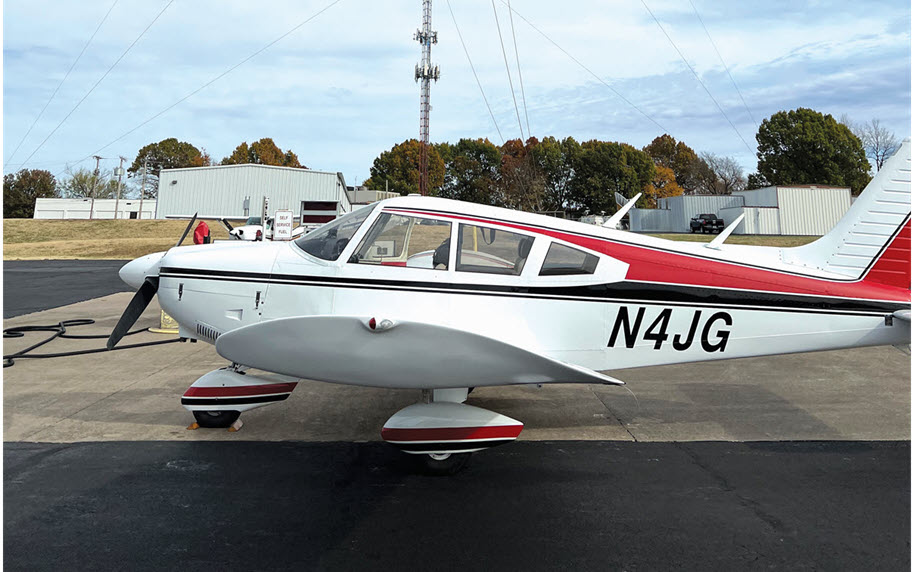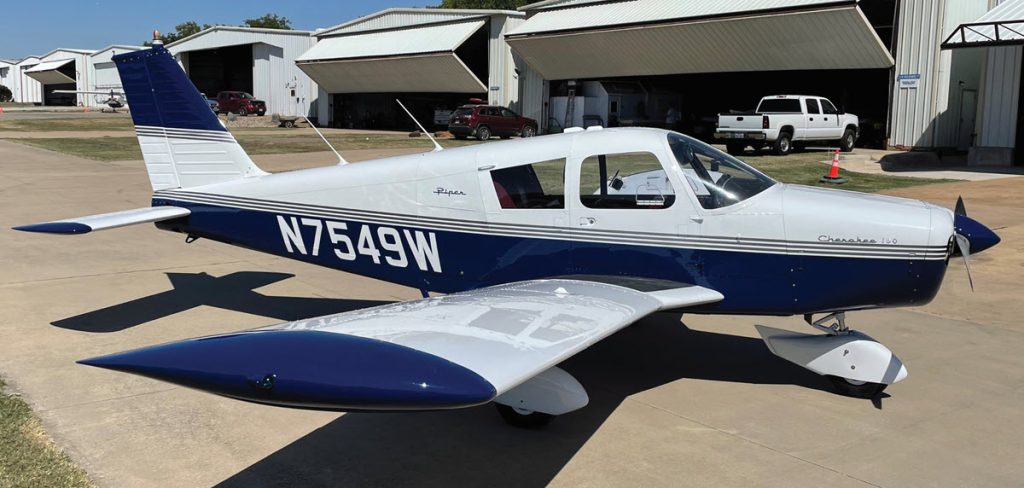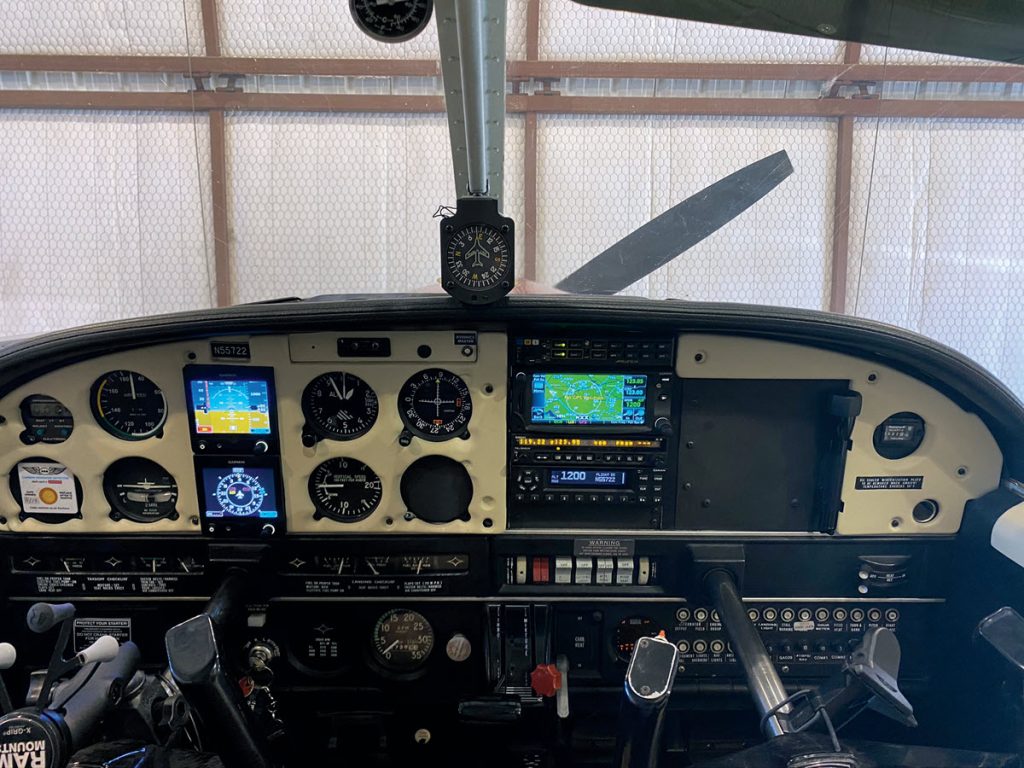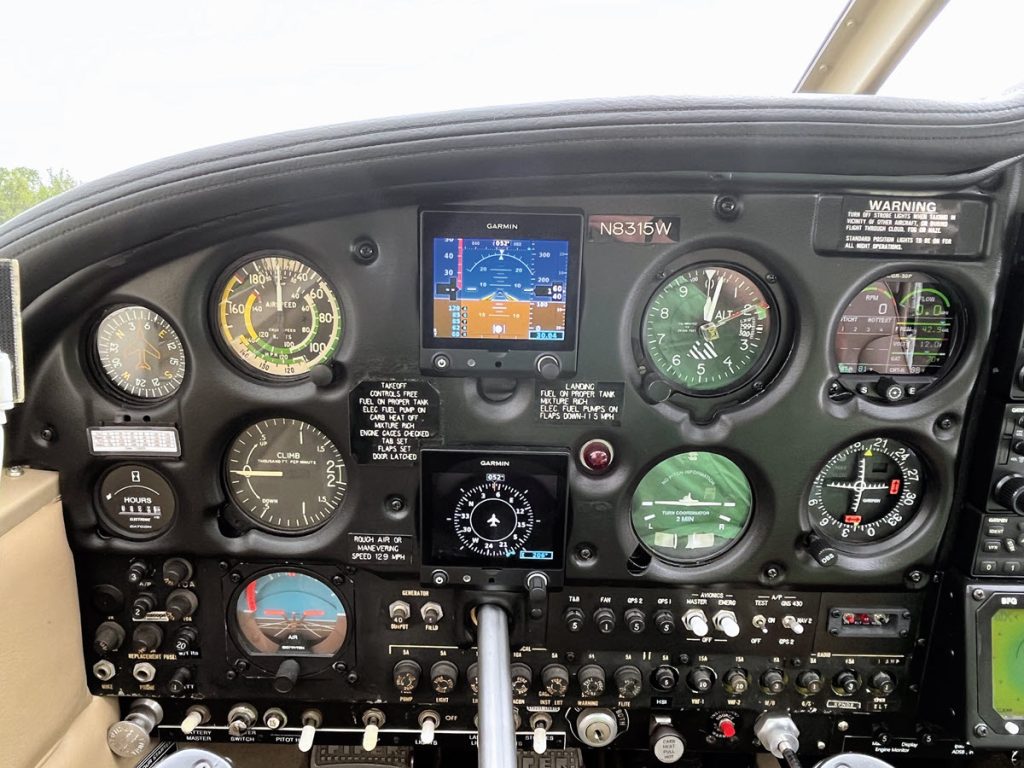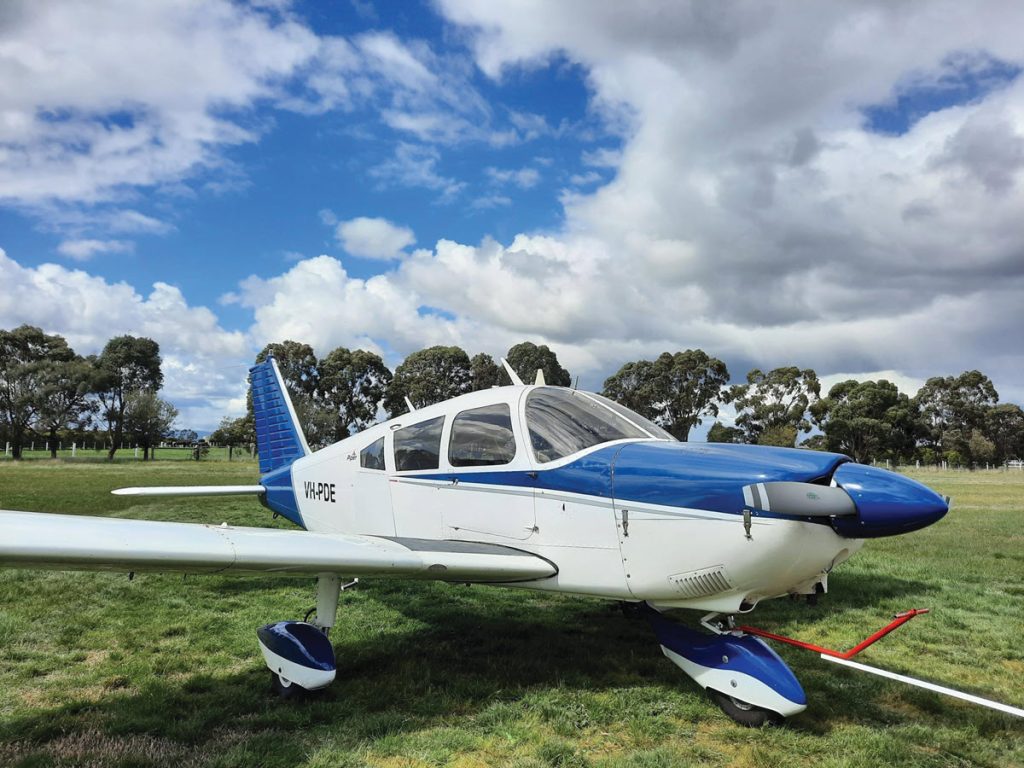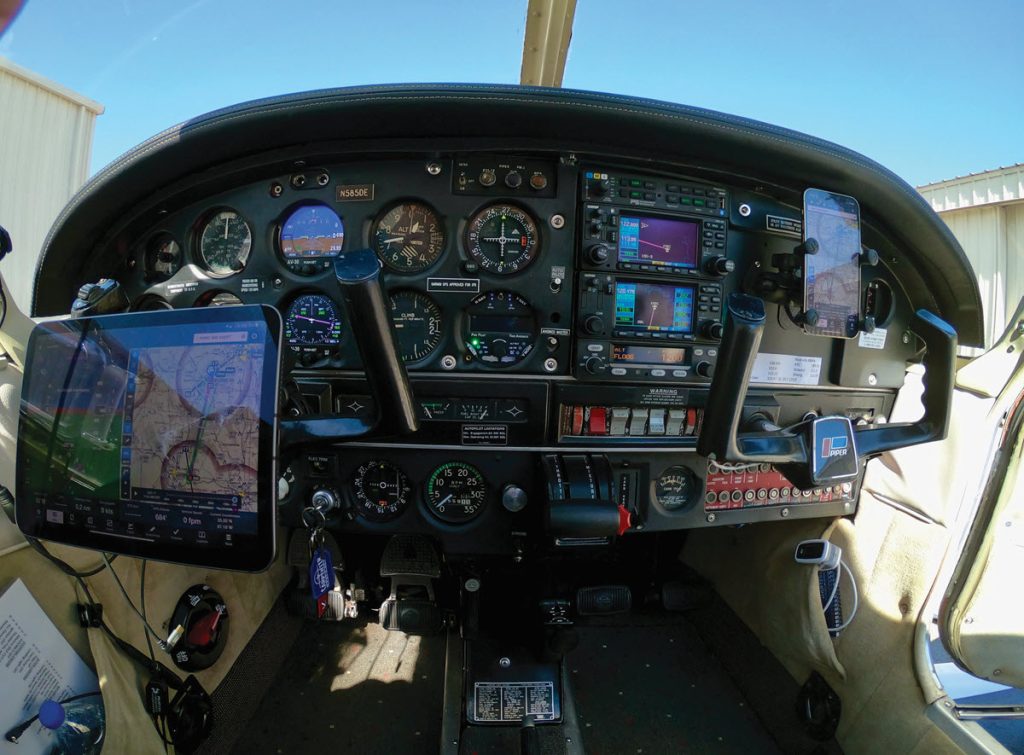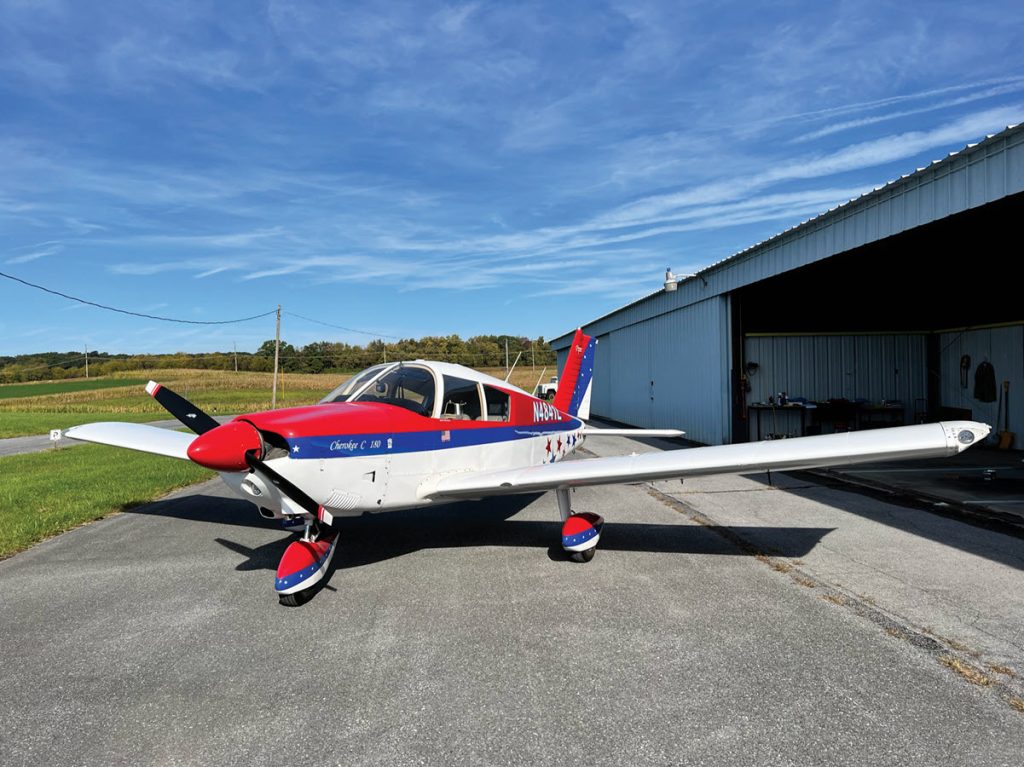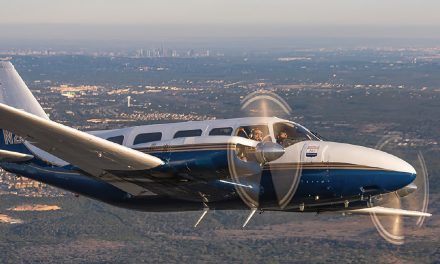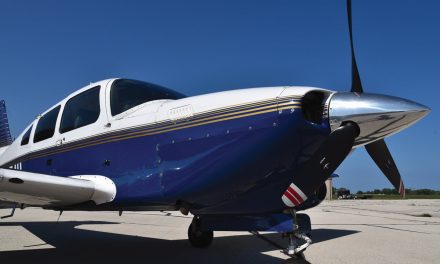In-Depth Reviews and Advice From Owners
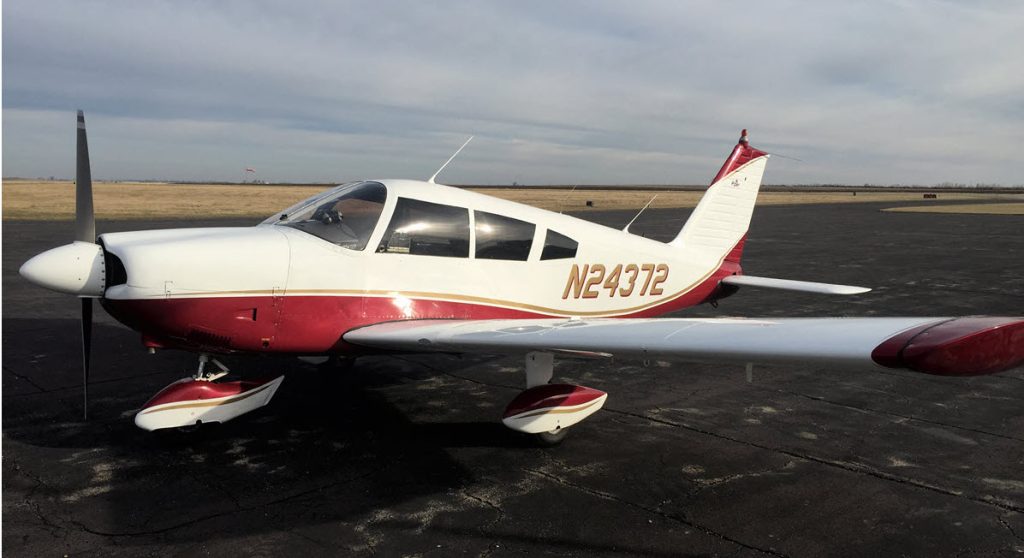
By Dan Brownell
For this new market report on the 180, we once again relied on our member owners to provide their feedback and thoughts about this perennial favorite. We thank those who participated and for those who didn’t make it into print, we’ll run longer versions online, and also use some of your comments in future issues. Perhaps as you peruse these responses, you’ll think of insights that were overlooked.
In any case, no matter where you are in your flying career, you will learn something new from other members. And if you are considering purchasing a 180, you’ll come away with a lot of information to help you decide whether it’s the right plane for you.
PA-28-180 Reviews and Tips from Piper Owner Society Members
180 Pre-Purchase Tips
Andrew Longmire, Mount Thorley, NSW Australia, 1973 Challenger
- Make sure it suits your mission.
- It’s simple to operate and simple to maintain; therefore, maintenance costs are well below a single-engine retractable companion aircraft.
- Try to get the Cherokee models later than a 1968 or, even like mine, the Challenger with a lengthened fuselage.
Bryan Mettler, Dansville, New York, 1966 180
- It’s a four-person with full-fuel plane. It’s comfortable and simple.
Carl Koele, Haslet, Texas, 1973 Challenger
- Get a prebuy from someone who has never seen the aircraft.
- Check to see if the avionics are up to date. They are hard to update right now with long lead times.
Check to see if the avionics are up to date. They are hard to update right now with long lead times.
David Fulkerson, McCook, Nebraska 1966 180C
- Look for an aircraft that has been flown somewhat regularly.
- Inspect it for yourself with a flashlight and mirror during the prebuy.
- Thoroughly research the wing spar AD and associated service bulletins.
David McQuade, Franklin, Tennessee, 1968 180D
- It’s got reasonable speed and useful load.
- It has excellent fuel economy.
- It’s forgiving to fly.
Jack Grady, West Chester, Ohio, 1969 180
- Check all ADs, particularly the wing spar ADs.
- Check Service Bulletins (SBs) too, as there are a lot of minor items to be completed.
- Replace the vacuum system.
Jerry Ossowski, Orland Park, Illinois, 1977 Archer II
- The 180 is super easy to land, its stall is gentle, and seems to take out crosswinds below about 5 feet AGL.
- Fueling is way easier than with a high wing.
- If you lean and keep it at 2,300-2,400 rpm, you’ll get 110 knots and under 8 gph.
Jim Curns, New London, Wisconsin, 1970 180E
- To me, it’s the best of simplicity and capability.
- It’s very forgiving and just fun without being outrageously expensive to own and feed.
- It’s not complex, so maintenance and insurance are more reasonable in cost.
Joe Gaynor, Smyrna, Delaware, 1965 180C
- Stay on top of Piper Service Bulletins and ADs.
- The O-360 is nearly bulletproof, but regular oil analysis can be a lifesaver.
- The 180 hp is well worth the extra cost compared to the smaller hp engines.
Ken Killian, Auburn, Washington, 1969 180D
- Look for corrosion.
- Have wing spars been checked?
- Check fuel tanks for leakage.
Matthew Earnest, Norman, Oklahoma, 1963 180
- Be sure all the ADs are addressed. The most recent, dealing with a crack in the wing spar, can be super expensive.
- If you want IFR, I’d recommend looking at 1965 or later, which have the standard six-pack.
- Don’t assume that since this is used as a trainer that it should be given a pass. With a high useful load and a decent cruise speed, this can be an inexpensive time builder and can hold four people with full fuel. Plus, with it being so popular, parts are plentiful and reasonably cheap.
Rory Crews, Huntsville, Alabama, 1972 180
- Don’t skimp on a thorough prebuy inspection, placing an emphasis on the top three areas of concern for older Cherokees: Wing attachment, midspar integrity, and flight control cable connections.
- It will cost more to repair and refurbish in the future than today. Hence, buy as much airplane as you can afford today, which will provide future savings.
- This isn’t a heavy hauler, but it’s perfect for a couple to use for frequent travel at a good speed without breaking the bank.
Ted Lucas, Chambersburg, Pennsylvania, 1967 180C
- Be sure you’re comfortable with the interior space.
- Has the plane been flown regularly?
- Check the logs carefully, especially items that are time dependent, like mags.
- Be sure to check the propeller log. It’s an expensive part. It may need overhaul, and it may be run out.
Warren Hall, Bolinda, Victoria, Australia, 1969 180D
- Make sure the tanks have been out recently, as the wings get full of dust, and you can’t clear the spar inspection ADs properly without this.
- Cables and control columns need a full service every decade or two, and it’s a lot of work. Make sure this is inspected properly.
Wayne Michelli, Kingsport, Tennessee, 1973 180
- If you can find one with panel upgrades, buy it since you will get upgraded value at a discount.
- Have someone you trust and knows the 180 do the prebuy and be there in person if you can.
- If the engine is low time and many years SMOH or new, borescope and do oil analysis.
Ryan Healy, West Dundee, Illinois, 1967 180C
- Get a thorough prepurchase by a competent Cherokee shop.
- Ensure all corrosion SBs have been complied with.
- Stay away from 180s with hollow crankshaft engines.
Pre-purchase checklist items that most people wouldn’t think of.
Andrew Longmire, Mount Thorley, NSW Australia, 1973 Challenger
Do a wing root inspection to ensure the Piper Safety Bulletin inspection has been done.
David Fulkerson, McCook, Nebraska, 1966 180C
Climb into the seat and make sure it’s something you’re going to be happy sitting in and getting in and out of.
David McQuade, Franklin, Tennessee, 1968 180D
The exhaust system. Mine had a leak where the shroud captures cabin heat.
Jim Curns, New London, Wisconsin, 1970 180E
For a prebuy, I look hard for corrosion and internal damage from stupid pilot tricks. Most obvious, did it live a sheltered life with care? Or was it left outside and ignored? It will show. I’ve seen people buy a fancy retractable for big money and not be willing to afford a hangar for it, while leaving it outside in the salt air ocean breezes, which is the worst source of corrosion. Know what you can afford and do more than you need to for proper long-term care. A good owner is a caretaker during the time they hold the title.
Joe Gaynor, Smyrna, Delaware, 1965 180C
Some of the available engines had a hollow crank, which is subject to a repetitive five-year inspection for interior corrosion.
Ken Killian, Auburn, Washington, 1969 180D
Check out seats, both front and back, as they typically don’t hold up over 50 to 60 years. Chances are they’ve been replaced, but, if not, they’ll probably need to be replaced.
Leo Cook, Lincoln, California, 1958 180 Comanche
Baffle health. They’re expensive to replace.
Rory Crews, Huntsville, Alabama, 1972 180
The hydraulic reservoir looks like a lighter fluid can, but it costs $1,000 new to replace. The reservoir is made of steel and prone to corrosion. Make sure you check for flaking paint, especially the bottom.
Ted Lucas, Chambersburg, Pennsylvania, 1967 180C
Be sure to check the brake/hydraulic system for leaks.
Warren Hall, Bolinda, Victoria, Australia, 1969 180D
Check to see if the door closes properly. It seems to be difficult to get it set right even with new seals.
Ryan Healy, West Dundee, Ilinois, 1967 180C
Most of the repetitive ADs can and should be eliminated by replacing affected components. Check the condition of the chrome on landing gear struts. Any pitting will result in problems with keeping the struts inflated.
How Does the 180 Compare?
Piper 180 vs. Piper 140/160
Carl Koele, Haslet, Texas, 1973 180 Challenger
The 180 is a true four-passenger airplane. It’s very economical and easy to insure.
Piper 1969 Cherokee 180 vs. 1978 Archer II (181)
Ken Killian, Auburn, Washington, 1969 180D
They fly like different airplanes, which they are. I learned to prefer the Hershey bar wing of the 180. It’s nimbler, has a faster roll rate, and can get down much faster with almost no float like the Archer.
Piper 180 Challenger vs. Normal Piper 180
Carl Koele, Haslet, Texas, 1973 180 Challenger
The 180 Challenger has a bigger wing but not the tapered wing, so it has better performance. Also, it has a larger fuselage and 1,000-pound useful load.
Piper 180 vs. Cessna 150/172
Matthew Earnest, Norman, Oklahoma, 1963 180
While I got my ticket in a 150 and have flown the 172, having four seats is misleading. My 180 has a useful load of 1,100 pounds, allowing for full fuel and four people. One of the biggest disadvantages, though, is that the view can’t be compared to high wings. While I’ve mostly gotten used to the bar down the center of the windshield, having low wings sure obscures the view, especially when taking it for sightseeing.
Piper 180 vs. Cessna 150
Jim Curns, New London, Wisconsin, 1970 180E
I owned a Cessna 150 for 10 years and liked it a lot, but when I first flew the 180 Cherokee, the only words I could think of to compare the experience were “What a hot rod.” I also noticed the ride in turbulence was so vastly much better that my wife, who really didn’t like to fly before, became a regular in the right seat.
Piper 180 vs. Cessna 172
Bryan Mettler, Dansville, New York, 1966 180
The Cessna 172 has less horsepower.
Jerry Ossowski, Orland Park, Illinois, 1977 Archer II
Entry and exit from cockpit are very difficult for the front-seat passenger on the Archer versus the C172. But back seat entry/exit is easier for the Archer.
Jim Curns, New London, Wisconsin, 1970 180E
172s are also a good all-around plane and are easier to get in and out of, but I never enjoyed them like I do the Cherokee. To me, the 180 visibility is better, and the stability, ride, and performance are, too.
Rory Crews, Huntsville, Alabama, 1972 180
Piper 180 advantages: It’s faster, has a better baggage compartment, and it’s easier to remove and reinstall the cowling.
Cessna 172 advantages: It has better visibility below and around the aircraft, it’s easier to land, and it’s easier for the pilot and passengers to get in and out of.
Jared Oldham, Thorp, Wisconsin, 1963 180
Half of my total time has been in a 172, the other half in my Cherokee 180. The Cherokee outperforms in cruise speed and visibility. Many times, around larger airports you need to look up. The 172’s wing really prevents looking at your entire surroundings. I would say a 172 is better for getting in and out of. With the two doors and the step-into style design, it beats the Cherokee.
Piper 180 vs. Cessna 182
Andrew Longmire, Mount Thorley, NSW Australia, 1973 Challenger
- The initial acquisition price is definitely lower. Prices have gone crazy even here in Australia. They’re currently listed at AUD $89,000-$110,000.
- The 180 has docile handling, with no wing drop in stall. It’s a very stable platform.
- The 180 has only slightly less TAS at 125 knots compared to 135 knots for the 182. No Constant Speed Unit (CSU); hence cheaper annuals.
- The fuel burn for a 180 is only approximately 8 gal/hr, compared to the 182 of nearly 13 gal/hr.
Piper 180 vs. Cessnas
David McQuade, Franklin, Tennessee, 1968 180D
I’ve flown various Cessna single engines but not owned them. While they’re easier to climb in and out of, I greatly prefer the flight characteristics of a low wing.
What should always be upgraded/restored on a used 180?
Andrew Longmire, Mount Thorley, NSW Australia, 1973 Challenger
Some of the 180s I’ve quoted all have old avionics in them, so they’re not upgraded, either. My Challenger has a small MGL Avionics screen supplementing the original AI and instruments. In the near future, I will likely update the GPS as well but, at the moment, I’m getting a complete engine overhaul to zero hours and that is costing a lot of money.
Carl Koele, Haslet, Texas, 1973 Challenger
GPS, ADS-B In and Out, all ADs and most SBs should be complied with. Look at the logs and how many hours. How much has the aircraft sat unflown? Airplanes don’t like to sit idle, so engine rust and seals for brakes, fuel lines, etc., may be an expense in your first year of ownership.
Jack Grady, West Chester, Ohio, 1969 180
Get rid of the vacuum system. Get ADS-B In and Out. Get at least a panel-mounted GPS with Indicator for GPS approaches.
Jerry Ossowski, Orland Park, Illinois, 1977 Archer II
Aluminum wiring, and, of course, the avionics.
Jim Curns, New London, Wisconsin, 1970 180E
That depends on what you buy. The cheapest airplanes cost the most to own if properly brought up to the condition they should be in. Most important is to spend enough money to get a really nice, safe airplane with good bones. That means no major problems like corrosion, spar issues, lack of proper care, or things you can’t afford to properly fix. The rest can be priced or changed at your pace accordingly.
Joe Gaynor, Smyrna, Delaware, 1965 180C
Landing gear scissor linkage.
Ken Killian, Auburn, Washington, 1969 180D
Wingtips, fuel lines, brake lines, and possibly fuel tanks.
Matthew Earnest, Norman, Oklahoma, 1963 180
The radios, intercom, and a decent ADS-B. The other steam gauges are reliable and can be upgraded when the money builds back up. Another typical issue is inaccurate fuel levels. But if you’re like me, I only pay attention to them if they show empty.
Rory Crews, Huntsville, Alabama, 1972 180
Refurbishing the aircraft protective coatings should always come first. This includes the exterior paint, the chrome on the struts, and the corrosion protective coatings for the wings.
Warren Hall, Bolinda, Victoria, Australia, 1969 180D
Stay on top of corrosion. It’s easy to treat when it’s light, but very expensive when you let it go. You don’t need the full paint job every time, but you do need to keep these older skins corrosion-free, including the belly and longerons.
Ryan Healy, West Dundee, Illinois, 1967 180C
- Shoulder harnesses installed.
- Fuses replaced with circuit breakers.
- Factory gascolator replaced with a Steve’s Gascolator.
- For safety’s sake, the old brass fuel valve must be replaced with the new style 6S122 valve.
What is the best reason to buy and/or fly this aircraft?
Andrew Longmire, Mount Thorley, NSW Australia, 1973 Challenger
In a word, simplicity. It has no CSU and no gear to retract; thus, operating costs are so much lower each year. I think people tend to forget that sometimes. It’s all well and good to have a faster plane like an Arrow with a TAS at 65% of 138 knots, compared to my Challenger at same power at 125 knots, a 13 knots difference. Or if over the same 200 nm sector, 1.45 hours in an Arrow, 1.6 hours in mine, just nine minutes slower. But for cost, I’d rather have my annual bill than theirs.
Bryan Mettler, Dansville, New York, 1966 180
It’s solid, dependable, and easy to land in a crosswind.
Carl Koele, Haslet, Texas, 1973 180 Challenger
The 180 is a great platform for PPL, commercial, and instrument ratings. It can also handle plenty of fuel and bags so you can travel.
David Fulkerson, McCook, Nebraska, 1966 180C
It is very versatile in the four-seat, fixed-pitch category. It can haul people and gear reasonably today, be a capable primary or IFR trainer tomorrow, and check the pasture next week, all while getting good fuel burn and requiring low maintenance. It holds its own with a decent payload on a high-density altitude day. The O-360 is stone-cold reliable. Parts for airframe and engine are reasonable and easily available.
David McQuade, Franklin, Tennessee, 1968 180D
Parts availability and cost effectiveness.
Jerry Ossowski, Orland Park, Illinois, 1977 Archer II
It’s easy to fly, as it’s very stable. It’s hard to stall and it’s easy to land and fuel.
Jim Curns, New London, Wisconsin, 1970 180E
I find it to be very economical to own and properly maintain, and that makes it a joy to keep. Besides, it’s just so much fun to fly.
Joe Gaynor, Smyrna, Delaware, 1965 180C
The 180 has reasonable maintenance and operating expenses and has cross-country capability.
Ken Killian, Auburn, Washington, 1969 180D
It’s a great airplane for the money and economical (if any airplane is). It’s good for VFR and is a great plane to learn IFR and accumulate hours. It’s also a true four-place airplane, as long as you watch your loading.
Matthew Earnest, Norman, Oklahoma, 1963 180
The best reason for me is the high useful load. There is nothing worse than wanting to take people flying only to be limited to half a tank of gas to fill the seats.
Rory Crews, Huntsville, Alabama, 1972 180
The 180 offers the best lifelong value, either for a private pilot for enjoyment or for a pilot building hours toward a professional career.
Ted Lucas, Chambersburg, Pennsylvania, 1967 180C
The cost of ownership is reasonable.
Warren Hall, Bolinda, Victoria, Australia, 1969 180D
It’s a super capable four-place machine for 118 knots. To get another 25 knots, it will cost double at least. It’s vice-free, as much as any airplane can be. I operate now on almost ultralight strip conditions when lightly loaded.
Wayne Michelli, Kingsport, Tennessee, 1973 180
Relatively low maintenance and insurance costs.
What is the state of the used market for 180s?
Andrew Longmire, Mount Thorley, NSW Australia, 1973 Challenger
There aren’t many for sale here in Australia, only around four and included a PA-28-181 with over 10,000, and an engine on-condition priced at AUD $95,000!
Bryan Mettler, Dansville, New York, 1966 180
The prices have increased 50% in the last two years.
Carl Koele, Haslet, Texas, 1973 180 Challenger
The Challenger is harder to find but it’s worth it if you can find one.
David McQuade, Franklin, Tennessee, 1968 180D
The used market has skyrocketed, but most single-engine planes have gone up considerably.
Jerry Ossowski, Orland Park, Illinois, 1977 Archer II
The market has been excellent. I’m not thinking of selling but am looking at prices of others. I’ve had to increase my insurance coverage a couple times.
Jim Curns, New London, Wisconsin, 1970 180E
Pretty much on fire for prices, roughly double or more increase in five years. They’re available, but good ones are no longer cheap.
Joe Gaynor, Smyrna, Delaware, 1965 180C
There’s been a big upswing in the last three years for planes that have been well maintained.
Matthew Earnest, Norman, Oklahoma, 1963 180
I bought mine eight years ago for $30,000. and now it’s worth $70,000 easily.
Rory Crews, Huntsville, Alabama, 1972 180
The selling price of these airplanes has fluctuated greatly in the past with the state of the economy, but values appear to have stabilized, even though we’re hearing the steady drumbeat of an impending recession.
Warren Hall, Bolinda, Victoria, Australia, 1969 180D
Great. Mine has gone up 25% in value since purchase.
Miscellaneous Tips
David Fulkerson, McCook, Nebraska, 1966 180C
These airplanes get grumpy if they have to sit for too long. Decide before you buy if you will have time to fly it like you want.
Jack Grady, West Chester, Ohio, 1969 180
Consider pulling the old upholstery — all the side panels but not headliner. Replace this with Acrovyn solid panels or similar product. Use liberal amounts of CorrosionX everywhere in the plane to combat corrosion.
Jim Curns, New London, Wisconsin, 1970 180E
Parts, components, and other needs are not only available, they’re also somewhat less expensive than many other brands. Lots of options are available for upgrading the airplane.
I believe there are very few aircraft of this age without some sort of prior damage, logged or unlogged. More important is proper repair. Done correctly, I think a recent repair with new components should make a plane more valuable than one with older parts and no damage history.
Joe Gaynor, Smyrna, Delaware, 1965 180C
Speed mods are money well spent. You gotta love 125 knots on 10 gal/hr. The 180 can be a great IFR platform when properly equipped.
Ken Killian, Auburn, Washington, 1969 180D
Has it been hangered or not? If it has been in weather, and even if not, corrosion could be a huge issue and should be paramount on a prebuy inspection.
Matthew Earnest, Norman, Oklahoma, 1963 180
Have reasonable expectations when looking at the cruising speed. Most say 129 knots, but in my experience it’s closer to 110.

